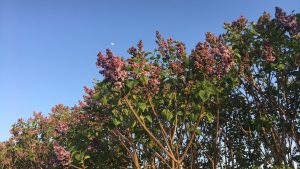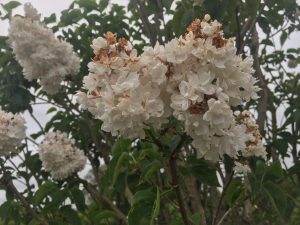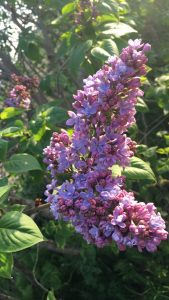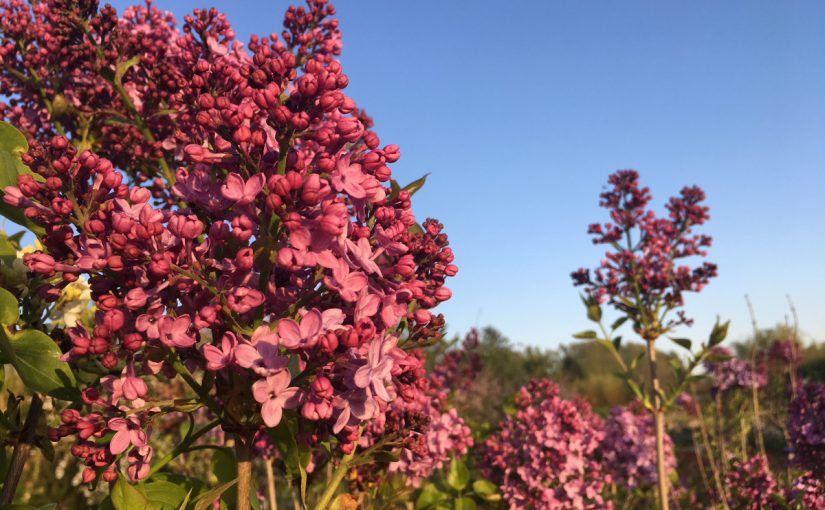Family: Oleaceae (also in this family: olive, ash, jasmine, forsythia). Members of this family are woodies, mainly trees and shrubs but also a couple lianas. Leaves in this family are characteristically opposite with alternating, whorling, or basal rarely observed. Flowers are bisexual and radically symmetrical, occurring in racemes or panicles, and often fragrant (Zomlefer).
Subfamily: No subfamilies for to Oleaceae family; instead divided into five tribes.
Tribe: Oleeae
Subtribe: Ligustrinae
Genus: Syringa
Scientific Name: Syringa vulgaris (common lilac)

Photo: Allie Kuppenbender
Native to the Balkan Peninsula where they grow wild on rocky slopes, lilac has become incredibly popular in Europe and North America especially in colder-weather regions. Botanically speaking, what you’re harvesting from lilac shrubs are panicles or a branching cluster of flowers. For lilac, these flowers are densely arranged within the panicle. Each individual flower is tubularly shaped with an open four-lobed apex (Bennett) (Zomlefer). Lilac is predominantly lavender, mauve, and white in color. That being said, there are now cultivars that can be yellowish, reddish, and blueish in color (Bennett).
There are earlier blooming varieties, which can be extremely helpful to get lilac to market earlier than competitors. However these earlier cultivars can be extremely susceptible to late frosts. Unexpected cold snaps can leave frost damage on the buds that will make some if not all unharvestable depending upon the severity of the frost.

Photo: Allie Kuppenbender
According to the Old Farmer’s Almanac and Bennett:

Photo: Allie Kuppenbender
- Zone: 3-9 (8/9 is pushing it and some varieties will not thrive in these warmer zone)
- Bloom Time: Spring (April-early June)
- Bloom Size: individual flowers are 6–10 mm long and 5–8 mm across, clustered in a dense terminate panicle 3-7 in (8-18 cm) long
- Height/Spread: 5-15 ft/5-15 ft (will not get this big if using it for cutting purposes)
- Soil: any soil type, neutral to slightly alkaline pH
- Site: partial to full sun
- Type: Woody
- Seed Type: Dicotyledon
For longest vase life, harvest when 30-40% of the flower buds have started to open, but the upper ones still remain closed. Put stems into clean buckets with water only (no hydrating solution). Can cut an X on the end of the branch to ensure water is circulating if cut is on older, woodier stem. This X is not necessary if cut is on newer, greener stem. Should only harvest 10-20% of a given plant per year to avoid serious setback to the harvestability for the next season.
SOURCES:
Lilacs: How to Plant, Grow and Care for Lilac Shrubs, Old Farmer’s Almanac
Lilacs for the Garden, Jennifer Bennett
Guide to Flowering Plant Families, Wendy B. Zomlefer
Plant Families: A Guide for Gardeners and Botanists, Ross Bayton and Simon Maughan
Specialty Cut Flowers; The Production of Annuals, Perennials, Bulbs, and Woody Plants for Fresh and Dried Cut Flowers, Allan M. Armitage and Judy M. Laushman
